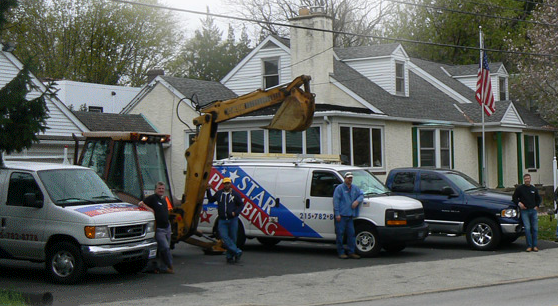What Happens If Your Attic is Not Vented? – The Consequences of Poor Ventilation
If an attic is not vented, the air in the attic will become stagnant and hot. This can cause a number of problems, including increased energy costs due to the need to cool the house, damage to the roofing materials, and a buildup of moisture in the attic that can lead to mold and mildew growth.
The lack of ventilation also prevents fresh air from entering into the attic which can lead to health issues such as asthma or respiratory illnesses.
Additionally, not ventilating your attic can reduce insulation effectiveness and create an uncomfortable living space. Proper ventilation is essential for healthy and safe living conditions in any home or building.
What Happens If Attic Is Not Vented?
Attics are an important part of any home and proper ventilation is essential for its longevity and comfort. Without proper ventilation, the attic can become a hot, humid, and dangerous environment for both the structure and its inhabitants. Poorly vented attics can cause a variety of problems, including mold growth, structural damage, and decreased energy efficiency. It is important to understand the causes of poorly vented attics as well as the signs and solutions to address the issue.
Causes of Poorly Vented Attic
One of the most common causes of poor attic ventilation is inadequate intake and exhaust ventilation. If there is not enough intake and exhaust vents installed in an attic space it will not be able to expel air adequately enough to prevent heat build up. Additionally, improper soffit and ridge vents can be a factor in poor ventilation since they are designed to allow air to flow into and out of the attic space. Finally, clogged intake or exhaust vents can also lead to poor ventilation if they are blocked or blocked with debris or insulation materials.
Signs of Poorly Vented Attic
When an attic is poorly vented there are usually several signs that indicate that something is wrong. Unusually hot temperatures in the attic are one sign that should alert homeowners that something is amiss with their ventilation system. Additionally, visible ice dams on the edge of the roof can be a sign that there is inadequate airflow in your attic space since ice dams typically form due to heat escaping from inside your home. Yellow or brown stains on ceilings or walls can also be an indication that your attic needs better ventilation since these stains usually appear due to trapped moisture within your walls or ceilings caused by high humidity levels in the attic space. Finally, high levels of humidity and condensation are other indicators that there may be inadequate airflow in your attic space since these conditions occur when warm air cannot escape from your home properly which leads to increased moisture levels inside your walls or ceilings.
Preventing Poorly Vented Attics
The best way to prevent poorly vented attics from occurring is by ensuring proper sizing and placement of intake, exhaust, and soffit vents throughout the entire structure from roof decking up through ridge vents at peak points. Additionally, proper insulation should be installed for cooler temperatures within the attic space as well as utilizing a ducted attic fan for optimum cooling capabilities when needed during warmer months. Lastly, monitoring humidity levels regularly will help identify any potential problems before they become more serious issues as too much moisture left unchecked can lead to mold growth which poses serious health risks for occupants within the home’s living spaces.
What Happens If Attic Is Not Vented?
If your attic is not adequately vented, it can lead to a number of potential problems that could damage your home and impact its resale value. Poor ventilation can cause an increase in humidity levels inside the attic, which can lead to mold and mildew growth, water condensation, and damage to the insulation and structural elements of your home. It can also cause overheating in the summer months, which can be dangerous for occupants in the home.
Improved Airtightness Properties for Your Home
Adequate ventilation helps to maintain a balanced temperature inside your attic, which will help ensure that airtightness properties are maintained. This is especially important during winter months when cold air can seep into your attic through any small gaps or cracks. Proper ventilation will help prevent this from happening by allowing air to circulate freely throughout the space. This is especially important if you have an insulated attic as it will help maintain warm temperatures inside the space, reducing energy bills and helping keep your home more comfortable.
Reduced Risk for Developing Ice Dams during Winter Months
Ice dams are a common problem that occurs when snow accumulates on the roof of a house and melts due to inadequate ventilation in the attic space. The melted snow then refreezes near the edge of the roof, creating an ice dam that prevents proper drainage of water off of your roof. This can lead to water backing up onto your roof and leaking into your home. Adequate ventilation will help prevent this from occurring by ensuring that temperatures remain consistent throughout all parts of the house – both in winter and summer months – avoiding rapid changes in temperature which can lead to ice dams forming on your roof.
Lower Risk for Condensation Buildup
Condensation buildup is another problem that arises when there is inadequate ventilation in an attic space. When warm air meets cold surfaces such as windows or walls, it condenses into liquid droplets which then accumulate on these surfaces. This not only causes damage to these surfaces but also leads to mold growth due to increased humidity levels inside the attic space. Adequate ventilation will help reduce condensation buildup by allowing air to circulate freely throughout all parts of your house and maintaining even temperatures across all surfaces – reducing moisture levels and helping avoid potential damage caused by condensation build up over time.
Reduced Chance That Heat Will Damage Your Roof Structure
When temperatures rise during hot summer months, this heat can be transferred through any small gaps or cracks present in an inadequately ventilated attic space onto your roof structure below it – causing warping or cracking of these structures over time due to extreme heat exposure. Adequate ventilation will help reduce this risk by allowing air circulation throughout all parts of your house – thus reducing any extreme changes in temperatures which could cause damage over time if left unchecked.
Cooler Temperatures In and Around Your Home During Hot Summer Months
Adequate ventilation helps reduce temperatures inside an attic during hot summer months by allowing warm air out while drawing cold air from outside into it – thus maintaining balanced temperatures inside this space at all times regardless of season or weather conditions outside its walls. This helps keep interior spaces within your home cooler during hot summer months as well as reduces energy bills associated with keeping them cool during these periods as there is less need for artificial cooling methods such as air conditioning units when properly ventilated attics are present within a home structure
FAQ & Answers
Q: What causes a poorly vented attic?
A: Poorly vented attics are caused by too little intake and exhaust ventilation, improper soffit and ridge vents, and clogged intake and exhaust vents.
Q: What are signs of poor ventilation in the attic?
A: Signs of poor ventilation in the attic include unusually hot temperatures, visible ice dams on the roof’s edge, yellow or brown stains on the ceiling, and high levels of humidity and condensation.
Q: What steps can I take to prevent a poorly vented attic?
A: You can prevent a poorly vented attic by properly sizing and placing intake, exhaust, and soffit vents; insulating properly for cooler temperatures in the attic; utilizing a ducted attic fan for optimum cooling and ventilation; and monitoring humidity levels regularly.
Q: What solutions are available for poor ventilation problems in attics?
A: Solutions for poor ventilation problems in attics include replacing faulty or damaged intake and exhaust vents; repairing or upgrading insulation where needed; and cleaning intake and exhaust vents regularly.
Q:What mistakes should I avoid when ventilating my attic?
A: Common mistakes to avoid when ventilating your attic include building the intake and exhaust vents too close together, skipping insulation upgrades during renovation projects, not accounting for possible additions to your home structure, ignoring cleaning and maintenance schedules, and installing gable/underside eave and/or soffit vents too high up.
In conclusion, if attic ventilation is not properly vented, it can lead to serious plumbing issues. Poor ventilation can cause condensation to build up and moisture to accumulate in the attic, leading to water damage, mold growth and even structural damage. In order to prevent these issues, it is important that attics are properly vented in order to ensure proper airflow and drainage.
Author Profile

-
Star Plumbing, located in Elkins Park, PA, is a full-service plumbing company owned and operated by Mitchell Gordon. Since its inception, Star Plumbing has been providing its customers with reliable, quality plumbing services.
The Star Plumbing website offers informative articles on DIY plumbing and plumbing equipment, offering readers helpful advice and tips on how to take care of their own plumbing needs. This is a great resource for those who are looking to tackle a plumbing project themselves, as it provides useful information and advice on how to safely and successfully complete a plumbing job. Additionally, the website provides detailed descriptions of the various plumbing tools and equipment that are available, as well as detailed instructions on how to use them.
Star Plumbing’s website is a great resource for anyone with plumbing needs. Whether a customer is looking for advice on how to take care of their own plumbing or to schedule service from Star Plumbing, the website offers helpful advice and information for all their plumbing needs.
Latest entries
- April 12, 2024Plumbing Equipment And AccesoriesI Tested And Ranked The Best 10 Inch Rough In Round Toilet In 2024: And Here’s What I Found
- April 12, 2024Plumbing Equipment And AccesoriesI Tested And Ranked The Best Stone That Cleans Toilets In 2024: And Here’s What I Found
- April 12, 2024Plumbing Equipment And AccesoriesI Tested And Ranked The Best Heat Tape For Plumbing In 2024: And Here’s What I Found
- April 12, 2024Plumbing Equipment And AccesoriesI Tested And Ranked The Best Kaboom Toilet Bowl Tablets In 2024: And Here’s What I Found
